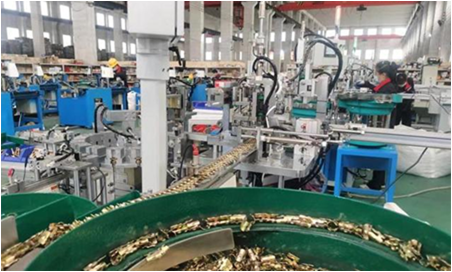Dec . 12, 2024 15:02 Back to list
micro screws
The Rise and Significance of Micro Screws in Modern Engineering
In the ever-evolving world of engineering and manufacturing, the demand for precision and miniaturization continues to grow. Among the myriad components that facilitate the assembly of miniature devices, micro screws have emerged as a critical element. These tiny fasteners, often measuring less than one millimeter in diameter, play a vital role in various industries, including electronics, medical devices, automotive, and aerospace. This article delves into the importance, types, manufacturing processes, and applications of micro screws, highlighting their indispensable role in contemporary engineering.
Importance of Micro Screws
Micro screws are essential for assembling compact devices where conventional screws would be impractical due to space constraints. They provide a robust method of joining components that demand high precision and reliability. In medical equipment, for example, micro screws are used in devices like pacemakers and surgical instruments, where consistent performance is critical. In the electronics industry, they secure components in smartphones, tablets, and wearable technologies, where size and weight are paramount. The reliability offered by micro screws ensures the integrity of these devices over their lifespan.
Types of Micro Screws
Micro screws come in various types, each designed for specific applications. Some of the most common types include
1. Flat Head Micro Screws These screws have a flat top that allows them to sit flush against the surface, making them ideal for applications where surface smoothness is essential.
2. Pan Head Micro Screws With a rounded top, pan head screws provide a larger bearing surface, which is advantageous for spreading load and reducing the risk of damage to softer materials.
3. Socket Head Micro Screws These screws have a hexagonal socket instead of a traditional slot, allowing for better torque application and reducing the risk of stripping during installation.
4. Self-tapping Micro Screws Designed to create their own hole when driven into materials, these screws eliminate the need for pre-drilling, saving time and effort during assembly.
The choice of screw type is crucial and depends on factors such as the materials being joined, required strength, and environmental conditions.
micro screws

Manufacturing Processes
The production of micro screws requires specialized techniques due to their small size and the precision required for their use. The most common manufacturing processes include
1. Cold Heading This process involves creating the head of the screw and forming the body by deforming metal under high pressure at room temperature. This method is efficient and helps in maintaining the material's strength.
2. Thread Rolling This technique is used to create threads on the screw. It involves deforming the metal under pressure using rollers, which produces stronger threads compared to cutting methods.
3. CNC Machining For more complex designs or specific applications, CNC (Computer Numerical Control) machining can be employed. This allows for highly precise adjustments and bespoke solutions for various industries.
4. Coating and Finishing Finally, micro screws often undergo surface treatments for anti-corrosion protection, improved aesthetics, or enhanced friction properties, making them suitable for diverse environments.
Applications of Micro Screws
Micro screws are ubiquitous across numerous industry sectors
- Electronics They hold together circuit boards and other electronic components, ensuring devices function correctly and withstand daily usage. - Medical Devices In implants, surgical instruments, and diagnostic tools, micro screws provide the necessary connection without compromising on space or causing damage to delicate structures. - Aerospace and Automotive With stringent safety and performance standards, micro screws contribute vital connections in complex systems like engines and dashboards. - Robotics and Drones The miniaturization of components in robotic systems and aerial devices makes micro screws indispensable for effective assembly.
Conclusion
As technology advances and the demand for smaller, more efficient devices increases, the role of micro screws becomes ever more critical. Their ability to provide strength and reliability in compact configurations allows engineers to innovate continuously and push the boundaries of what is possible. Understanding the various types, manufacturing processes, and applications of micro screws is essential for anyone involved in modern engineering and design. With their significant impact on various industries, micro screws are indeed the unsung heroes of the engineering world.


